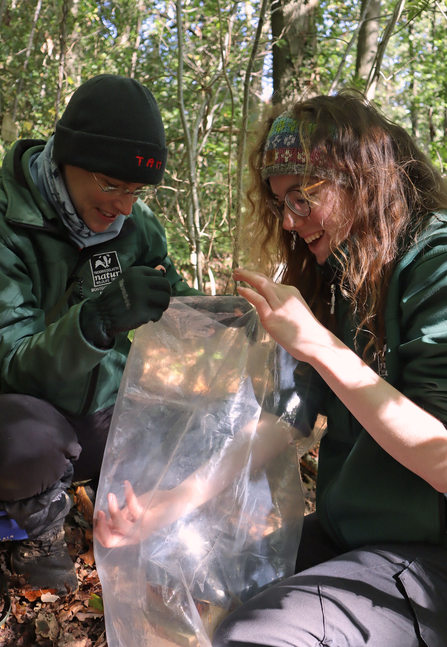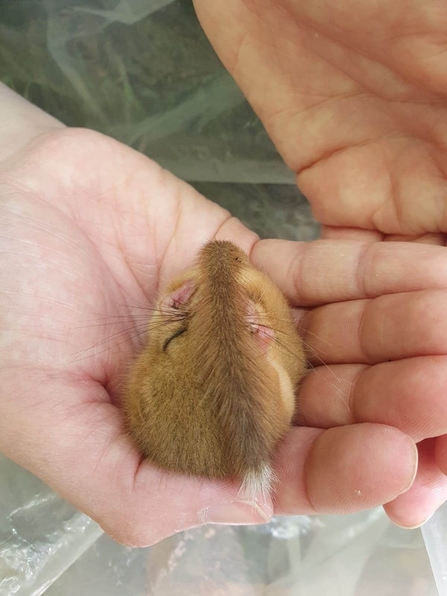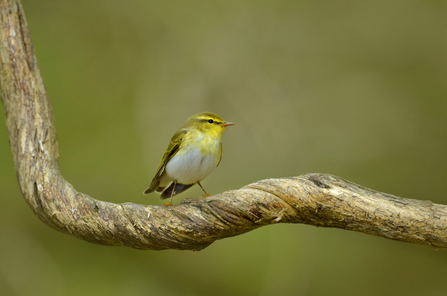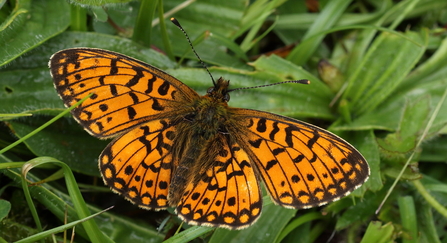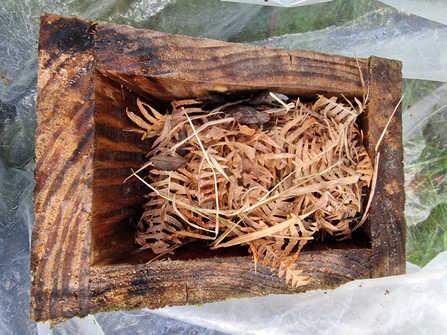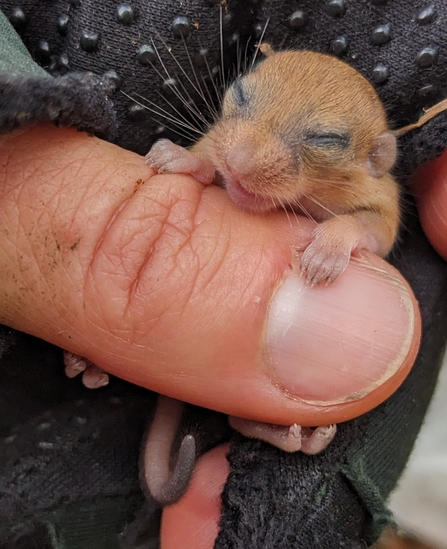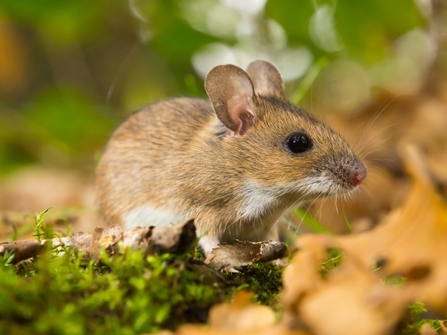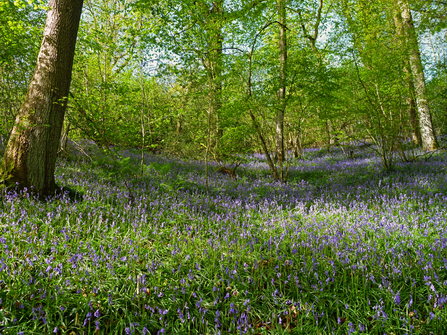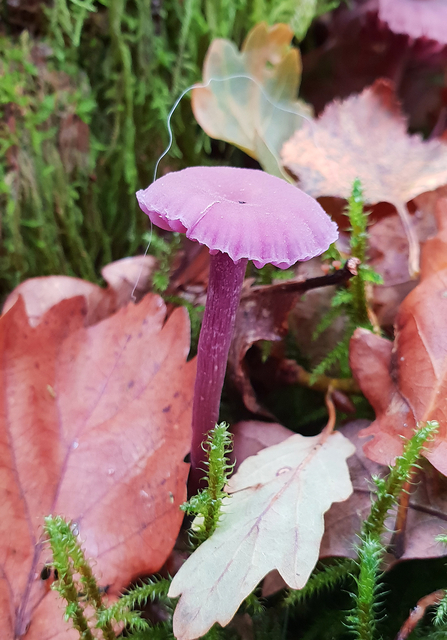The leaves have fallen, the ground is crisp, the woods are nearly silent… and the dormouse snoozes away for the winter! The Hazel Dormouse, Muscardinus avellanarius, is nocturnal, arboreal and very elusive. They are possibly one of the cutest animals I have ever set eyes on. The first time I saw one I was overwhelmed with how cute it was; with its big eyes and long fuzzy tail. I didn’t think there could be anything cuter until… I held my first dormouse in May 2023! This little guy was still in torpor. Torpor is similar to hibernation but is for a shorter period of time (usually lasting hours, rather than weeks or months). It is an adaption allowing animals to survive short harsh periods, often when there is reduced food availability.
Montgomeryshire Wildlife Trust (MWT) contribute to the National Dormouse Monitoring Programme (NDMP), which is run by People’s Trust for Endangered Species (PTES). This programme is over 25 years old and collates records from over 400 dormouse monitoring sites across the UK. Last year, 6,182 dormice were recorded from 414 sites! Dormouse boxes and tubes are used to monitor the mice, which they use to nest and sleep in. On five of our MWT nature reserves, we check our dormouse boxes 4 times a year, in May, June, September and October. We record the number of dormice, and other mammal species found, the sex, weight and age. You must have a licence to handle dormice, and thanks to People’s Postcode Lottery funding (awarded by Postcode Planet’s Trust) this is what I am training to do. PPL funds part of my role as Conservation Officer and allows me to help undertake important like this.


